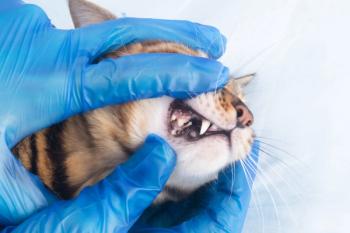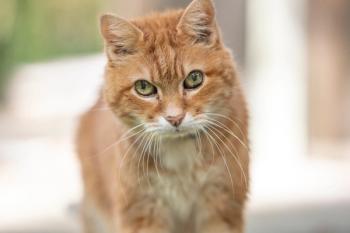
Journal scan: Do cats go mad upon entering your clinic?
Trazodone may help your veterinary clinic go from Wonderland to wonderful.
"But I don't want to go among mad people," Alice remarked. "Oh, you can't help that," said the Cat. "We're all mad here." - Alice in Wonderland (Getty Images)Reading about mad creatures in Wonderland is fun. Watching cats go mad upon crossing your clinic threshold isn't.
It isn't fun for cat owners either, which is partly why feline visits have decreased 13.5% since 2006, according to the latest census.1 Thankfully, veterinary medicine has progressed in leaps and bounds when it comes to
Wonder(land) drug
A recent study examined the safety and efficacy of using trazodone, a serotonin antagonist and reuptake inhibitor, to sedate cats. The drug has already been documented as safe and effective in dogs.2-5
Over a four-week period, six male domestic shorthair laboratory cats were given single oral doses of trazodone at 50, 75 and 100 mg and one placebo, so each cat served as its own control.
Mellow measurement methods
Each study participant was fitted with an accelerometer activity monitor one week before the start of the study to record locomotor activity, and data were collected for the duration of the four-week study at 30-second intervals. Each cat's activity was also recorded via video camera before dosing and every 30 minutes for the next four hours. At each interval, the cats were assigned an enclosure activity score from 1 (sedate) to 5 (very active) by an observer with no knowledge of the specific treatment given.
The cats underwent thorough physical examinations 90 minutes after being given each treatment and were given a behavioral response score for each step of the exam. Researchers also used McCune's cat stress assessment scale to measure stress at three points: pre-exam, exam and post-exam.6
Relaxation results
Accelerometer data showed cats were less active after receiving trazodone, with peak sedation occurring two and a half hours after receiving 100 mg trazodone. The lowest enclosure activity scores, 1 (sedate) and 2 (calm), were only measured in the cats after receiving trazodone (at any dose), and the difference between the enclosure activity scores of cats when they received 100 mg trazodone compared with placebo was statistically significant.
Total behavior response scores, which included only struggling, aggression and vocalization, did not reveal a statistically significant difference between cats that received 100 mg trazodone and placebo. Similarly, pre-exam, exam and post-exam stress scores showed no difference between the 100 mg trazodone and placebo groups.
Safe sedation?
The results of this study indicate that trazodone was well tolerated by the cats in single 50-, 75- and 100-mg doses. No adverse effects were observed in the study participants, and trazadone did not significantly affect heart or respiratory rates.
The study authors state that timing of the exams (90 minutes after administration) may account for the lack of statistically significant differences in the behavior and stress scores, as the two variables were not measured at peak sedation. They also say that an inadequate scoring system may have also played a role.
The investigators listed several study limitations, including the small sample size of only neutered male cats and the fact that the cats were housed in a single room in view of the other study participants.
It is apparent that further study is needed, but the safety of the medication in these test subjects is reassuring. In a world of limited feline oral anxiolytics options, trazodone (most likely at 100 mg dose given two hours before a veterinary appointment) may show promise in calming cats headed to the clinic.
Orlando JM, Case BC, Thomson, AE et al. Use of oral trazodone for sedation in cats: a pilot study. J Feline Med Surg 2016;18:476-482.
Link to abstract:
References
1. American Veterinary Medical Association (AVMA). Cat-owning households. In: AVMA (ed). U.S. pet ownership & demographics sourcebook. Schaumberg, Illinois: AVMA, 2012, pp 75-87.
2. Gruen ME, Sherman BL. Use of trazodone as an adjunctive agent in the treatment of canine anxiety disorders: 56 cases (1995–2007). J Am Vet Med Assoc 2008;233:1902-1907.
3. Gruen ME, Sherman BL. Animal behavior case of the month. J Am Vet Med Assoc 2012;241:1293-1295.
4. Gruen ME, Roe SC, Griffith E, et al. Use of trazodone to facilitate postsurgical confinement in dogs. J Am Vet Med Assoc 2014;245:296-301.
5. Jay AR, Krotscheck U, Parsley E, et al. Pharmacokinetics, bioavailability, and hemodynamic effects of trazodone after intravenous and oral administration of a single dose to dogs. Am J Vet Res 2013;74:1450-1456.
6. Kessler MR, Turner DC. Stress and adaptations of cats (Felis silvestris catus) housed singly, in pairs, and in groups in boarding catteries. Anim Welf 1997;6:243-254.
Newsletter
From exam room tips to practice management insights, get trusted veterinary news delivered straight to your inbox—subscribe to dvm360.




